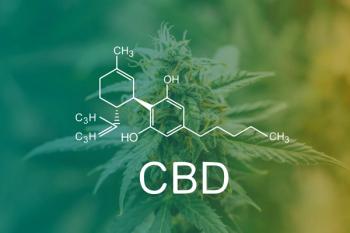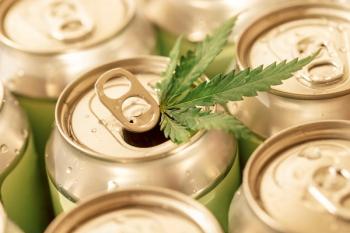
Cannabis Science and Technology
- January/February 2022
- Volume 5
- Issue 1
- Pages: 14-15
How Are Tetrahydrocannabinol—THC—Isomers Entering the Market?

THC isomers are defined and discussed to better understand where they come from, how they are produced, and how they are being distributed.
Most cannabis consumers have heard of tetrahydrocannabinol (THC) and many even know the term Delta-9 THC. However, the recent surge in other versions of THC is generating confusion among everyone from the general public to the federal government. In this article, THC isomers will be defined and discussed to better understand where they come from, how they are produced, and how they are being distributed.
Tetrahydrocannabinolic acid, also known as THCA, is the dominant compound produced by the cannabis plant. When heated and consumed the THCA converts to THC.
THC is the compound that interacts with the endocannabinoid system and produces the euphoric cannabis “high.” THCA and THC are both predominantly produced by the cannabis plant as delta-9. However, using various methods, the THC molecule can be converted into other arrangements called isomers.
I·so·mer / īsəmər/: Two or more compounds with the same formula but a different arrangement of atoms in the molecule and different properties.
Delta-8 THC, delta-9 THC, and delta-10 THC are all isomers (Figure 1).
This small change in arrangement of atoms will cause the molecule to interact differently with the endocannabinoid receptors. While the molecules are very similar, the slight change in interaction with the endocannabinoid system will result in a completely different physiological effect. The intoxicating “cannabis high” or euphoria is associated with delta-9 THC. Whereas anecdotal reports on the physiological effects of delta-10 have mainly mentioned energy and focus, similar to caffeine. Reports have acknowledged that delta-8 THC produces a slightly relaxing high, but is short lived and significantly less potent than delta-9 THC.
There is evidence demonstrating that THC isomers are naturally found in the cannabis plant at supremely low concentrations. However, the cannabis plant has mainly been bred for genetics that produce high quantities of delta-9-THCA. To achieve high concentrations of these isomers, delta-9 THC or cannabidiol (CBD) must undergo a process to convert the compound from THC or CBD into delta-8 THC or delta-10 THC. The hemp market has become flooded with products that are “hemp-derived” but contain high levels of delta-8 or delta-10 THC. Consumers are accessing unregulated hemp-derived psychotropic products online and in brick and mortar stores, which has regulatory agencies across the country baffled by how this is happening.
Using chemical synthesis, these molecules can be manipulated to convert them into the desired end products. Chemical synthesis can yield much higher concentrations of these isomers at a much higher rate of efficiency than the plant naturally produces. So, hemp and CBD manufacturers are turning to chemical synthesis by using various solvents and acids to synthesize these isomers. However, some operators are using temperature and pressure to manipulate these compounds.
Since the passing of the Farm Bill in 2018, CBD- and hemp-based products have grown exponentially within marketplaces across the US. These products can be found anywhere from Saks Fifth Avenue to the local gas station, touting the myriad of benefits of hemp and CBD. THC isomers have become front and center in the media as they are rapidly growing in popularity among consumer goods.
As media coverage sheds light on the processes used to produce THC isomers from hemp, industry members, consumers, and governing bodies are becoming concerned. Their concerns are stemming from a lack of understanding related to whether or not operators are equipped to properly handle these solvents and acids. An important step for producing consumer products is ensuring that there are no harmful chemicals in the end product prior to releasing the product to market. Are these manufacturers able to properly remove all residual solvents from the synthesized product? Are there harmful byproducts being produced and remaining in the final product? Are these operators equipped to test for these harmful chemicals and by-products? These are all questions that surround these newly released products made with THC isomers from hemp.
In September 2021, the US Food and Drug Administration (FDA) issued a statement on the risks of delta-8 THC. Since the statement, several states have banned or issued guidance on how they will regulate these products and the distribution of them. Without regulation in the hemp and CBD market, manufacturers are not required to test for these residual solvents or by-products in the end consumer good. Consumer safety is of the utmost importance and yet consumers are often unaware of the potential risks involved with these unregulated products. There will be a shift in the market, whether forced or voluntary, but it is unclear at this time how the market will change.
About the Columnist
Lo Friesen is the founder, CEO, and Chief Extractor of Heylo. With a background in chemistry and clinical research, Lo was inspired to explore cannabis as a medicine and to enter the emerging industry. She joined Eden Labs, a leading CO2 extraction equipment manufacturer to support and expand a Research and Development department. There she managed the development of their latest and greatest CO2 extraction system. In 2017, after working with Eden Labs and another cannabis processor, Lo launched Heylo with a mission to help people get more out of life with cannabis.
How to Cite this Article
L. Friesen, Cannabis Science and Technology 5(1), 14-15 (2022).
Articles in this issue
almost 4 years ago
In Search of the Golden Potency Methodalmost 4 years ago
Cannabis Research Is Cannabis Sciencealmost 4 years ago
Autoflowering Genetics Present Unique Opportunitiesalmost 4 years ago
Mycology 101: Understanding Mold as a Threat in the Cannabis Industryalmost 4 years ago
How Does Carbon Dioxide Enrichment Affect Environmental Control?Newsletter
Unlock the latest breakthroughs in cannabis science—subscribe now to get expert insights, research, and industry updates delivered to your inbox.




